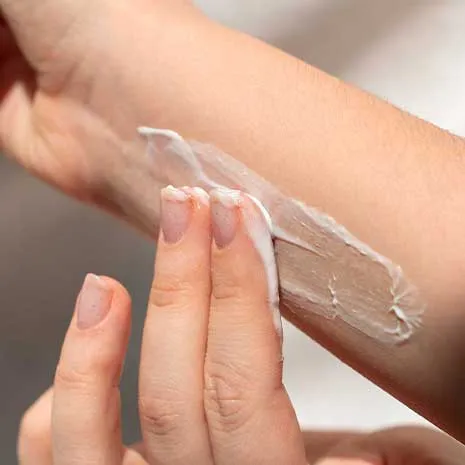The Use of Corticosteroid Creams in Vitiligo Treatment

The Use of Corticosteroid Creams in Vitiligo Treatment
- 15 July 2025
- 244

Vitiligo is a chronic skin condition characterized by the progressive destruction of melanocytes, leading to depigmented patches on the skin. Among various therapeutic options, topical corticosteroids (commonly referred to as steroid creams) are widely used as a first-line treatment, especially during the early stages and in localized forms of the disease. These creams play a vital role in suppressing immune-mediated melanocyte destruction and promoting repigmentation in affected areas.
This article explores the rationale behind corticosteroid use in vitiligo, commonly prescribed formulations, proper application techniques, treatment durations, risk management, and alternatives based on the latest scientific evidence.
What Are Corticosteroid Creams and Why Are They Used in Vitiligo?
Corticosteroid creams are topically applied glucocorticoids that reduce inflammation and modulate immune responses in the skin. In vitiligo, they are used to:
- Suppress autoimmune attack on melanocytes
- Reduce local inflammation that inhibits repigmentation
- Stimulate residual melanocyte activity, supporting melanin production
They are especially effective in early-stage non-segmental vitiligo and on facial and neck lesions, where the skin is thinner and more responsive to treatment.
Commonly Used Corticosteroids in Vitiligo
Topical corticosteroids are classified based on potency: low, moderate, potent, and very potent. In vitiligo, moderate to potent corticosteroids are commonly used under dermatological supervision.
|
Active Ingredient |
Example Brand Name |
Potency |
Recommended Duration |
|
Mometasone furoate |
Elocon |
Moderate–potent |
Up to 8–12 weeks |
|
Betamethasone valerate |
Betnovate |
Potent |
Max. 6–8 weeks |
|
Fluticasone propionate |
Cutivate |
Moderate |
6–12 weeks |
|
Hydrocortisone |
Locoid |
Mild |
Safer for long-term use in children |
Important: Potent steroids should be used cautiously on the face, neck, and genital areas due to higher risk of side effects.
Proper Application and Dosage Guidelines
The effectiveness of corticosteroid creams is highly dependent on correct usage. Improper or prolonged application can result in reduced efficacy or adverse effects.
Best practices include:
- Apply a thin layer once daily
- Limit treatment duration to 6–12 weeks depending on potency
- For facial areas, restrict use to maximum 4–6 weeks
- Consider alternate-day application or tapering the dose
- Discontinue upon repigmentation or switch to a non-steroidal agent like tacrolimus
Combination protocols with calcineurin inhibitors are often used to extend therapeutic effects while minimizing steroid-related risks.
Regional Efficacy of Steroid Creams
Steroid responsiveness varies depending on the body area due to differences in skin thickness and blood supply.
|
Body Area |
Expected Response Rate |
Notes |
|
Face |
60–80% |
Most favorable outcomes |
|
Neck |
50–70% |
Combine with non-steroidal agents |
|
Trunk |
40–60% |
Widespread use needs caution |
|
Hands/Feet |
20–40% |
Often resistant; combine with phototherapy |
|
Genitals |
50%+ |
Use low-potency steroids briefly |
Possible Side Effects and Risks
When used excessively or improperly, corticosteroids can cause various local and systemic side effects, especially in children and facial areas.
Potential side effects include:
- Skin atrophy (thinning)
- Telangiectasia (visible blood vessels)
- Hypo- or hyperpigmentation
- Hypertrichosis (excess hair growth)
- Topical steroid addiction or withdrawal
- Corticophobia, where patients avoid use due to fear of side effects
These risks can be mitigated by limiting treatment duration, monitoring usage, and combining with non-steroidal alternatives when appropriate.
Corticosteroids in Combination Therapy
Corticosteroids are often more effective when used as part of a comprehensive treatment plan involving other modalities such as:
- Topical tacrolimus or pimecrolimus (non-steroidal immunomodulators)
- Excimer laser therapy for resistant patches
- Narrowband UVB phototherapy for widespread vitiligo
- Oral antioxidants (vitamin D, B12, zinc) to reduce oxidative stress
These combinations can enhance repigmentation, minimize relapse, and reduce the likelihood of long-term side effects.
Corticosteroid Use in Children
Pediatric vitiligo requires extra caution. In children, the skin is thinner and more sensitive to corticosteroids. Therefore, only low-potency agents should be used, and treatment duration must be limited.
Pediatric guidelines:
- Apply 2–3 times per week at most
- Use only for 4–6 weeks
- Monitor for side effects closely
- Prefer tacrolimus 0.03% for facial lesions
Frequently Asked Questions
Yes. Corticosteroids are especially effective for early and localized vitiligo, particularly on the face and neck.
Yes, but daily use should be limited to short durations (e.g., 4–6 weeks), followed by tapering or drug holidays to avoid side effects.
They can be used with caution. Milder corticosteroids are preferred for facial areas, and treatment should not exceed 4–6 weeks.
No. They can stimulate repigmentation, but vitiligo is a chronic condition that often requires long-term management.
Overuse can lead to a dependency where skin worsens after stopping the steroid, known as topical steroid withdrawal or addiction.
